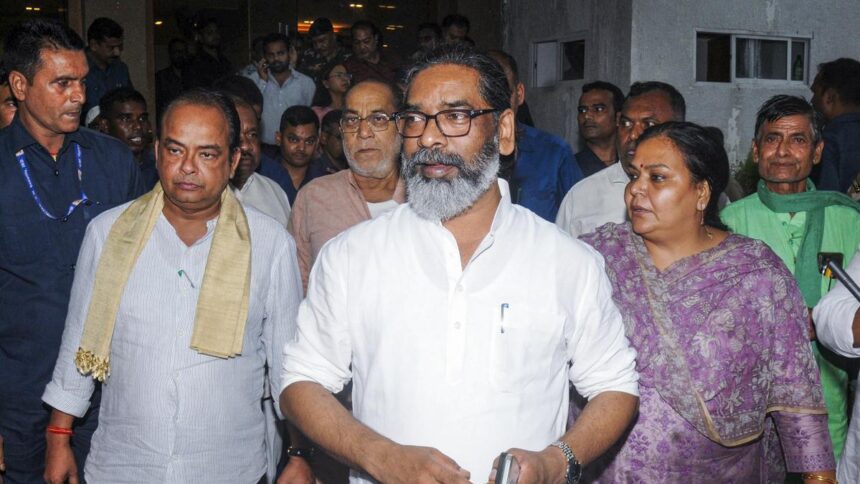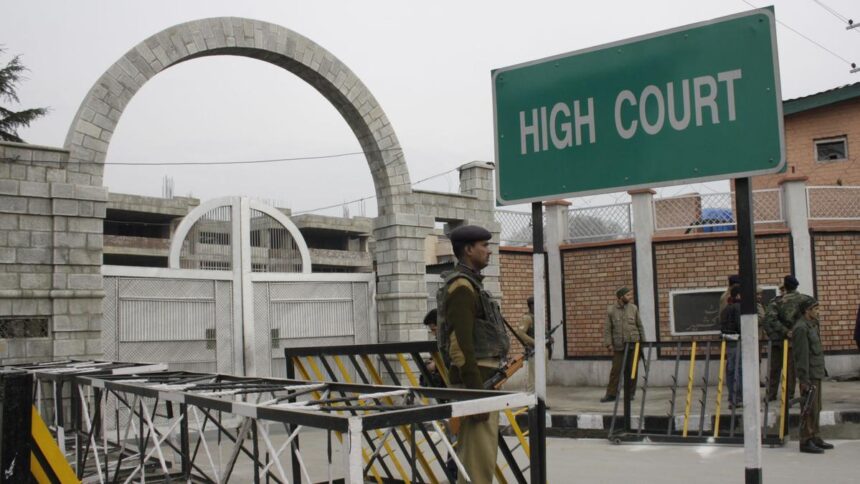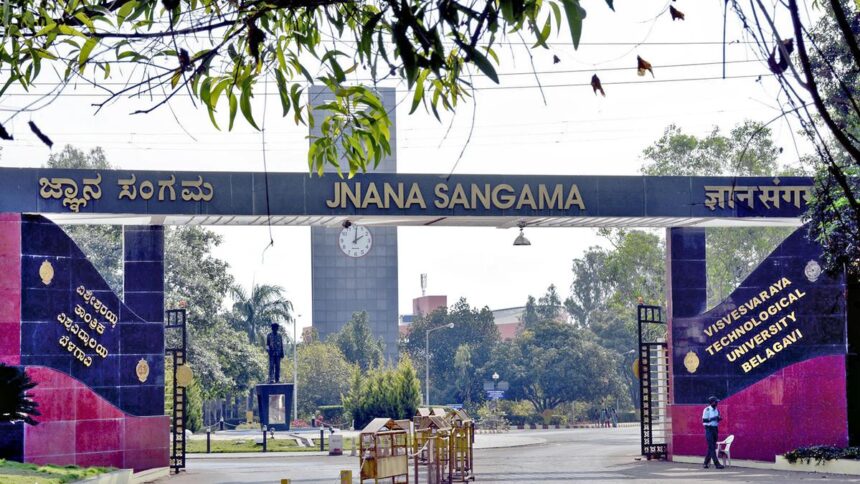In 2023, when Aadhil Shah joined ACE College of Engineering in Thiruvananthapuram, he imagined a fair bit of hostel fun, not weekends spent mopping floors. Now, as a palliative care volunteer, he has done everything from delivering medicines to helping elderly patients move homes. He doesn’t mind the work. “Volunteering was a sort of fulfilment that came unexpected,” says the 20-year-old who loves watching movies in his free time or hanging out with his hostel friends.
IT trainer Nihala Kathoon C.K. too began volunteering at 18, soon after joining college in Kozhikode. “Initially, I helped with fundraising and awareness events. Gradually, I began assisting with patient care and mentoring new volunteers. It soon became a part of my life,” says the now 25-year-old.
Caregiving can be tiring and thankless — not something we usually associate with youngsters in today’s world of AI tools and Instagram reels. Yet in Kerala, a quiet culture of students tending to the elderly and terminally ill as palliative care volunteers has taken root over the last decade, aided by local community and voluntary organisations, and by collaborations with palliative care institutions.
“Youth involvement has been a part of Kerala’s palliative care culture for the last 15 years or so,” says Dr. M.R. Rajagopal, a palliative care pioneer and founder of the non-profit, Pallium India. What began as a community-led initiative has now found official recognition. In September 2024, the Kerala government formally encouraged student involvement as was proposed in the revised state palliative care policy in 2019 after advocacy by palliative care groups. In June this year, the state announced a tech-enabled Universal Palliative Care Project integrating NGOs, volunteers, nurses, and institutions providing palliative care in real time.

Youth involvement has been a part of Kerala’s palliative care culture for the last 15 years or so.
| Photo Credit:
Illustration: Saai
Kerala has over 1,400 palliative care units. According to 2022 data by Pallium India, there were over 4,000 trained volunteers across ages in the state. The state’s newly formed Universal Palliative Care portal is said to have registered almost 8,000 volunteers, according to news reports in July 2025.
Fulfilling a need
Palliative care is not just for the terminally ill, clarifies Dr. Mathews Numpeli, medical officer for Kerala’s Universal Palliative Care Project. “In Kerala, palliative care is about supporting people suffering from serious health issues or any chronic ailment — whether from cancer, stroke, liver disease, neuromuscular disorders, mental illnesses or childhood illnesses. It is about providing any kind of support — medical, nursing or psychosocial — that patients and their families need. And in the last 5-10 years, we have been conducting weeks-long training programmes in schools and colleges. Training young people gives them the opportunity to contribute meaningfully to this care,” says Dr. Numpeli.
An estimated 5.4 million people in India need palliative care each year. According to a new study by Delhi non-profit Sankala Foundation, in 10 years, one in four people in Kerala will be over 60. Age-friendly care-planning is no longer optional.
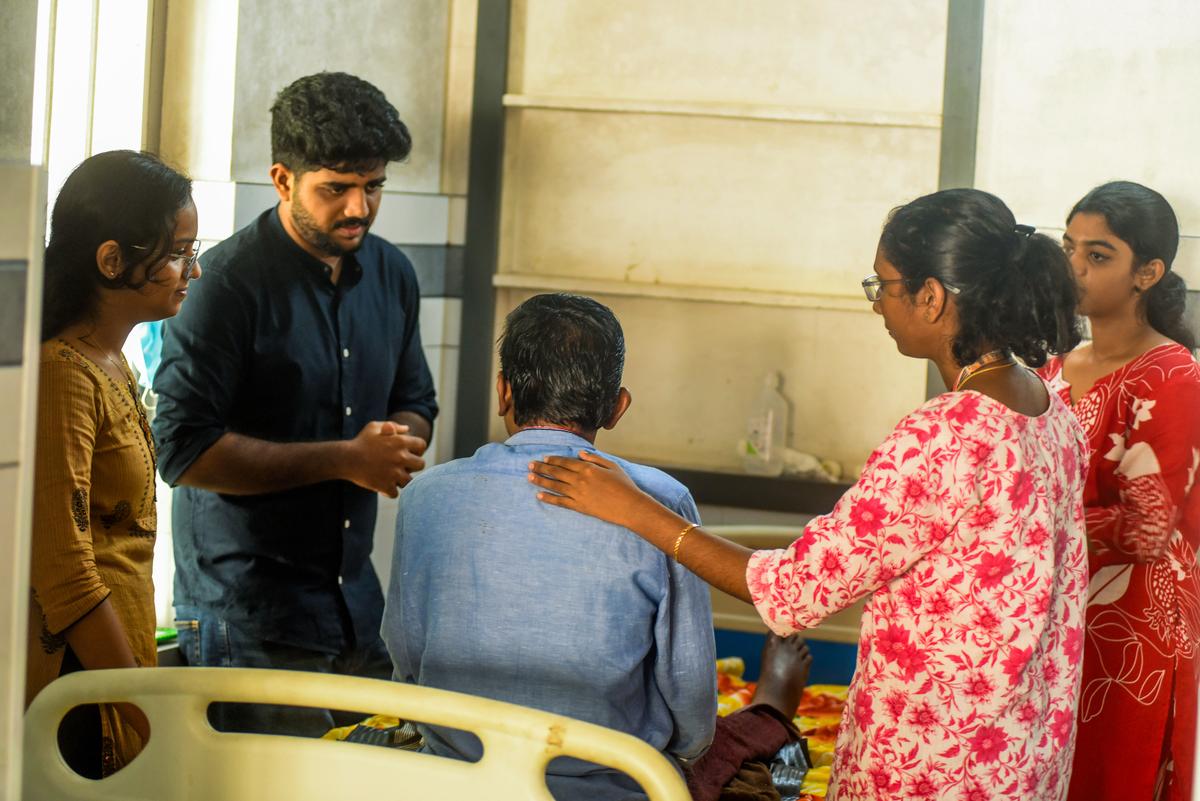
Student volunteers at the Institute of Palliative Medicine in Kozhikode.
| Photo Credit:
K. Ragesh
Kerala’s unique community movement in palliative care began in 1993, when Dr. Rajagopal and Dr. Suresh Kumar of the Institute of Palliative Medicine (IPM) in Kozhikode launched a pain relief clinic for terminally-ill cancer patients. Over time, through the community-owned, volunteer-driven Neighbourhood Network in Palliative Care model, this effort has expanded across the state, aided by its 2008 palliative care policy which mandated that local bodies set up palliative care services. Supported by doctors and nurses, the volunteers — including students — have aimed to improve quality of life for the ailing and their caregivers.
The updated state palliative care policy of 2019 proposed specialised training for students in schools and colleges. They are also exposed to the initiative through youth platforms such as Students in Palliative Care (SIPC) that help in mobilising large numbers of participants for awareness programmes, fundraising, and direct patient care support. Training and WHO-aligned certifications often make volunteering a peer-led, structured activity for interested students and many have grown up seeing communities around them doing it.
Ashla Rani (right) with her mother Janaki Krishnan
How Ashla Rani got her name back
Pallium India trustee Ashla Rani’s life changed forever after a train accident. Four years in and out of hospitals and multiple surgeries had reduced her identity to her medical condition. “I was just ‘that case of spinal cord injury’. That was my identity.” Everything shifted when she became a recipient of palliative care. “Suddenly people were calling me Ashla,” she recalls.
For the first time, Ashla, now 43, and her mother, Janaki Krishnan, who was her primary caregiver, felt seen as individuals. Her mother was no longer just a bystander but acknowledged for her role as a caregiver, and her challenges in caring for someone 24×7.
Ashla has been the recipient of palliative care from people across generations, including young people. From a volunteer scouting for wheelchair accessible movie halls across Thiruvananthapuram so that Ashla could watch a movie in the theatre after a decade, to her daily activities such as bathing, she has received physical and emotional support.
She believes the youth bring in a different kind of energy when they volunteer for palliative care. It’s about entrusting them with the opportunity and responsibility, she says. For both the recipient and caregiver, it is an important exchange. “It changes their attitude towards life as a whole,” says Ashla.
While volunteering for palliative care does happen in other states, and some like Karnataka and Maharashtra have a palliative care policy, student involvement is sporadic and not structured or ongoing as it is in many parts of Kerala. Schools and colleges in Kerala have been working with palliative care non-profits through NSS (National Service Scheme) and NCC (National Cadet Corps) units. This is how the seeds for the state’s unique culture of young people volunteering for palliative care have been sown. “It could be a combination of literacy, school enrolment, an ageing society, and the fact that the community movement started here,” says Dr. Rajagopal.
A social approach
What also works is that in Kerala, palliative care didn’t emerge as a purely medical issue. “It was seen as a social concern with medical needs,” says Dr. Hari Mohan, veteran oncologist and palliative care practitioner. Scouts and guides, and other schoolchildren regularly visit his clinic. “Awareness is huge even at the high school level,” he says.
What this initiative does is teach compassion early in a highly individualistic world. As one volunteer puts it, the culture of care is a big part of people’s way of life in Kerala because of strong local community involvement. For instance, in many places across the state, families cook and supply food as pothichoru (food parcels) to thousands of patients and bystanders in government hospitals via a network of voluntary organisations.
“There’s a very active palliative care culture in North Malabar where I come from,” says Benna Fathima, 25, a research scholar at Ashoka University in Sonipat. She began as a teenager, tagging along with her mother, a panchayat member, and her brother who was already a volunteer. “We clean homes, help with daily tasks, or just spend time with patients. Care isn’t just biomedical here, it’s deeply social,” she says.
This social side of care is on full display at Curios, IPM’s annual carnival that draws over 20,000 visitors. Meant to raise awareness and funds for palliative care, it feels like a college festival — with calligraphy workshops, music, food stalls and colourful streamers across its verdant green campus. Volunteers take patients around in wheelchairs to mingle with the crowd and there is much camaraderie and laughter.
“Youth involvement has been a cornerstone of our approach,” says Saif Mohammed, consultant and faculty member at IPM. Since 2010, its SIPC programme has brought together over 10,000 volunteers via awareness sessions in colleges. Members agree that the youth bring in new energy and different ideas. “Those genuinely interested get trained, and choose how to get involved — in patient care, community awareness or fundraising. And what students do with the training often goes beyond what we could plan or imagine,” says Mohammed.
How to train the young
> Pallium India partners with 14 panchayat-level organisations in Thiruvananthapuram to run sessions for Classes IX and XI.
> At IPM, volunteers are undergraduates between the ages of 17 and 21. Direct care volunteers complete a 20-hour WHO-aligned caregiver programme, with a six-month psychosocial support option for weekly visits.
> Pain and Palliative Care Society, Thrissur, also offers sensitisation programmes to student volunteers.
> Farook College in Kozhikode runs a pain and palliative care clinic and a dialysis centre that is managed and aided by teachers and students.
Nihala Kathoon is one of those students. The Kozhikode resident started by organising activities, gradually moving on to working with patients, a track many students take. One memory stays vivid in her mind. “There was an 18-year-old girl admitted here with cancer. During Curios 2023, we performed Oppana, a traditional Muslim dance from this region, where one performer plays the bride. This girl insisted on being the bride and was thrilled to get that opportunity, often checking herself in the mirror, taking photos.”
The experience is still cherished by those who knew her, for by the time the 2024 event came along, the girl was in a severely weak state. She passed away soon after. “It was very emotional for me though we’re trained to handle such moments,” recalls Kathoon. “The comfort was in knowing that we had made her happy in her last months.”
Antidote to loneliness
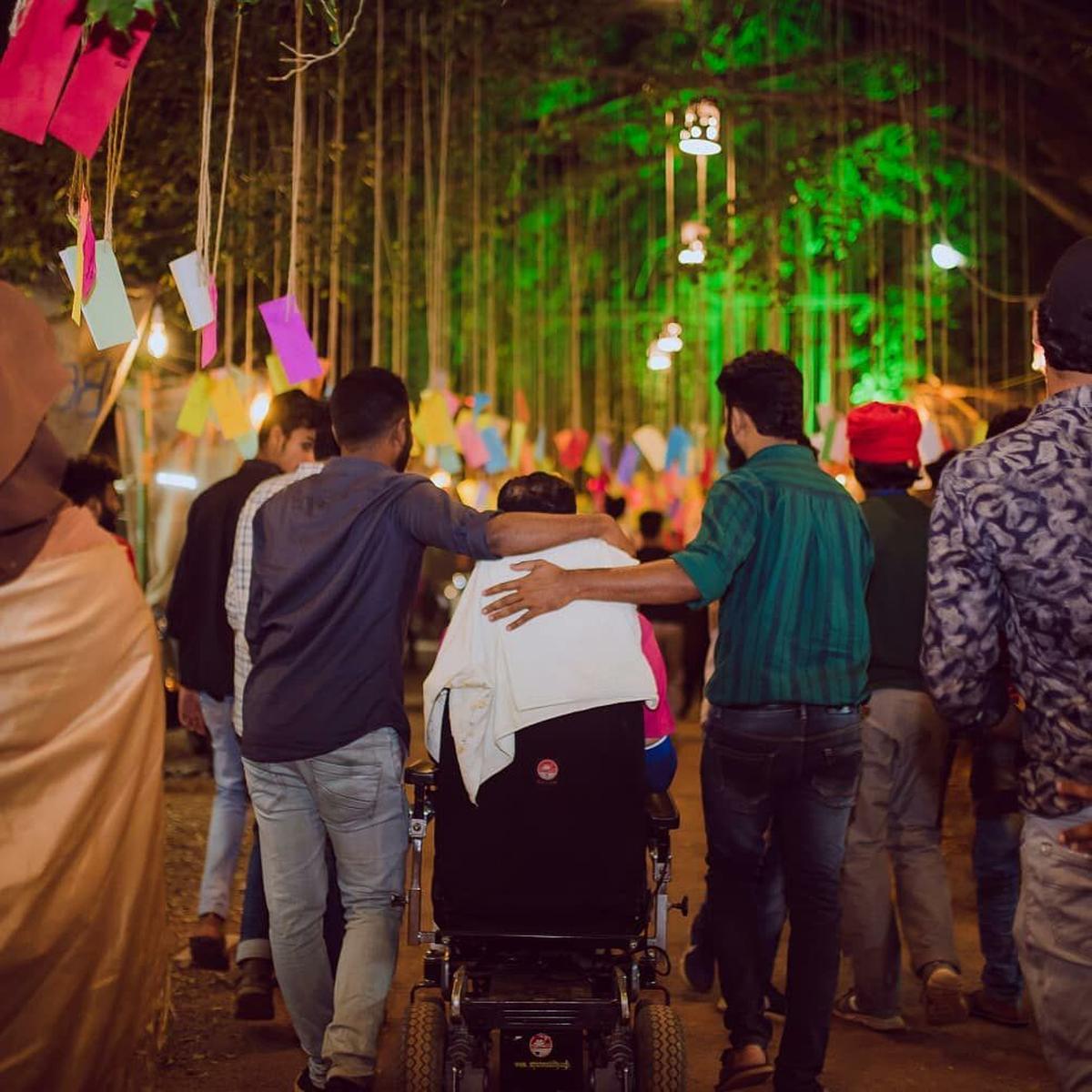
An event organised by Students in Palliative Care at IPM, Kozhikode.
| Photo Credit:
IPM, Kozhikode
If emotions are tough to handle for some young volunteers, compassion too doesn’t come easy. At 14, Fathima froze at the sight of a catheter during an initial palliative care visit. And in her confusion, she gulped down the coconut water meant for the patient. “I felt terribly guilty. I was supposed to make the situation better, but made him feel worse with my reaction.” She eased back into caregiving through the healing power of words. “I started writing letters to patients. That helped me feel I still had something meaningful to offer,”
Training and counselling help build empathy and teach small but vital details. “We were told not to drink juice in front of diabetic patients even if their family insisted, because they may not have had juice in years,” Fathima says. She also learnt to notice little details such as if families could afford medicine or had anybody to help around.
Beyond school, palliative care volunteering is often through word of mouth and cuts across the socio-economic divide. Students offer help as and when required; patient needs are assessed by the organisation they are volunteering with, the local nurse or village panchayat. It could vary from once a week to a few times a month. Usually, one patient is visited by two volunteers.
The students’ youthful energy can be an antidote to the loneliness of elderly patients. Kerala’s long migration history means much of its working population is employed outside India, resulting in a large number of elders living alone. “In 2015, over 1.7 lakh senior citizens in Kerala lived in single-member households. Many live in complete isolation,” says Dr. Rajagopal.
Students interact with a patient at Pallium India, Thiruvananthapuram.
| Photo Credit:
Nirmal Harindran
Given this background, requests for care can come in many forms. Once an elderly man asked Fathima to photograph him with his wife so they could have a laminated portrait. “Sadly, he passed away before I could give it to him,” she says.
The emotional weight of the work is real, but so is its impact on both patients and volunteers. Kathoon remembers cutting the thickened toenails of a paraplegic woman she was visiting. “It wasn’t a big thing for me, just a human act. But to her, it was huge. It meant comfort and dignity.” One day, when Kathoon was running late for her visit, she received a worried phone call. “‘Aren’t you coming today,’ the woman asked me. That’s when we realised how much our visits meant to her,” she says.
Kathoon had cared for her grandmother earlier but volunteering taught her the importance of dignity. “These patients once lived active lives too,” she says. Palliative care, she believes, is about making sure someone feels seen and valued.
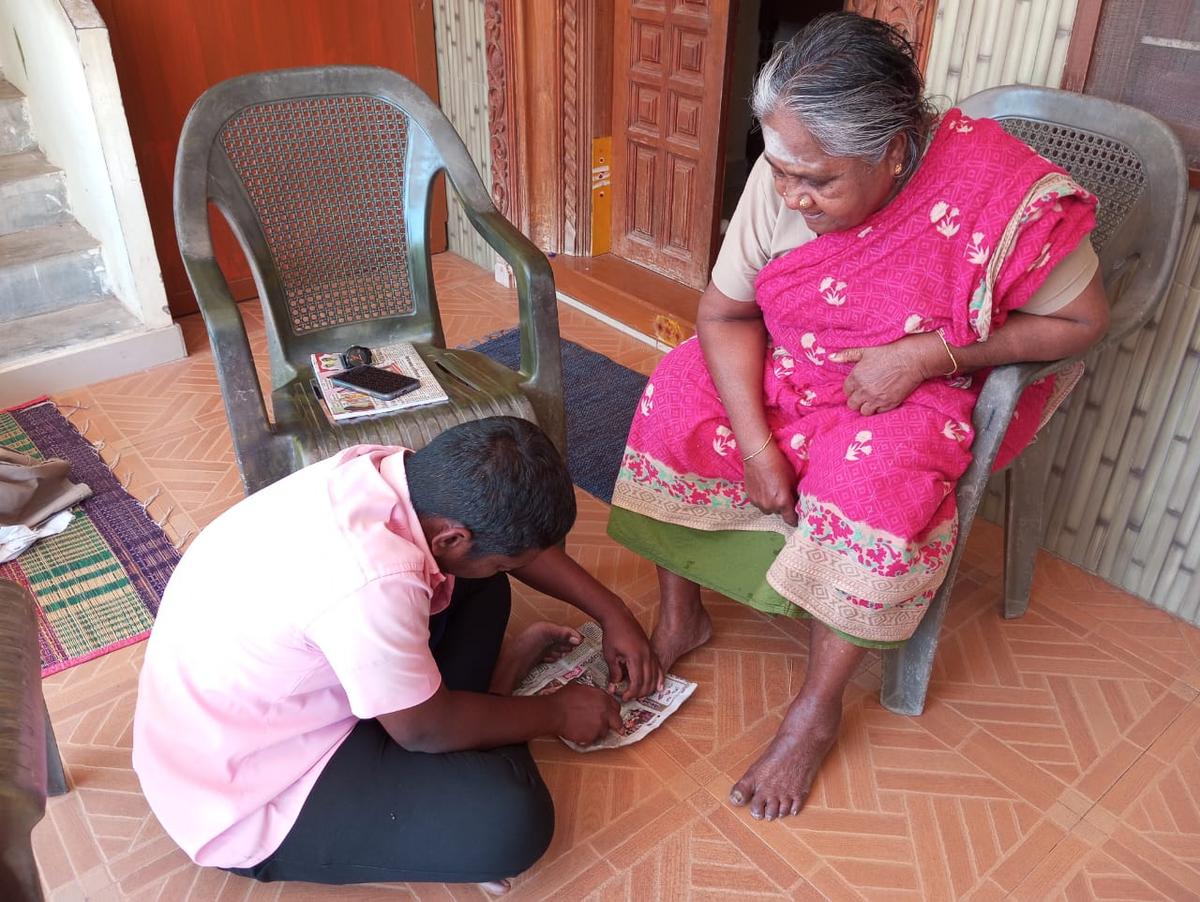
Spinal warriors in Puducherry
In Puducherry, Sanjeevan Palliative Care of Sri Aurobindo Society supports over 2,250 patients across 145 villages, and gives students the opportunity to find empathy and responsibility within themselves by visiting them. Dr. Mohan Raja S., medical officer at Sanjeevan, says, “Schoolchildren from Classes II to X often visit patients across villages to offer psycho-social support. They help them comb their hair or spend time with them.” Nursing students too volunteer. Given the many cases of spinal injury in the region due to road accidents, a WhatsApp-based support group called Spinal Warriors brings together student volunteers and spinal injury survivors to provide help when needed.
Ayana Kunju, 21, works with IPM, joining doctors and nurses on their rounds, assisting with medicines, and providing psychosocial support. She first joined as a volunteer while in college. Caring for patients seems to be her calling and it has helped define her chosen career of a social worker. “When I dress wounds or do small procedures, I feel very happy because I am helping so many people. The happiness on their faces means a lot,” she says.
In the nuclear family era, such experiences can bridge generational gaps. “Today, many children lack emotional anchors,” observes Dr. Rajagopal. “Compassion and connection with elders help develop emotional intelligence.” He believes young people often have more sincerity on the job than adults whose commitments are divided due to varied responsibilities.
Building connections
However, not everyone can deal with an atmosphere of ailment and death. Kunju and Kathoon both say losing someone can be deeply emotional. Their training often focuses on this aspect and there is constant support. “It helps to hear about the experiences of our seniors and others around,” says Kunju.
The fact that volunteers have the freedom to choose how they wish to help makes a difference. B. (name withheld), an engineering student in Kochi, says he prefers to be involved with indirect patient care (fundraising and event management activities) and that volunteering has made him more caring towards his ageing grandparents at home.
There is also the risk of “hyper-volunteering”. Dr. Mohan recalls a time when a volunteer wrongly advised a cancer patient to skip treatment. “These misjudgements happen because volunteers aren’t trained to diagnose or treat, yet some begin to think of themselves as experts.” He believes the answer lies in structured training and setting clear boundaries.
Despite the flaws and shortcomings, young people coming together to bring compassionate care to the ailing and dying is a unique phenomenon. As Mohammed notes: “It cultivates compassion — something that cannot be learnt from textbooks, but only through real, human connection.” It’s something the early architects of palliative care in Kerala recognised and drove home. “Doctors and nurses will always have an important role, but the driving force has to come from the people,” adds Mohammed.
In today’s conflict-ridden world and times of social apathy, being kind and considerate can sometimes be considered as weaknesses. From that viewpoint, young people lending their time to caring for the ailing, abandoned and dying can be seen as a gentle yet constant pushback against a society that often deserts the weak and vulnerable. “Volunteering in palliative care has taught me to trust in the politics of love and care. It gives me hope,” says Fathima.
The writer is a freelance journalist and the co-author of Rethink Ageing.
















